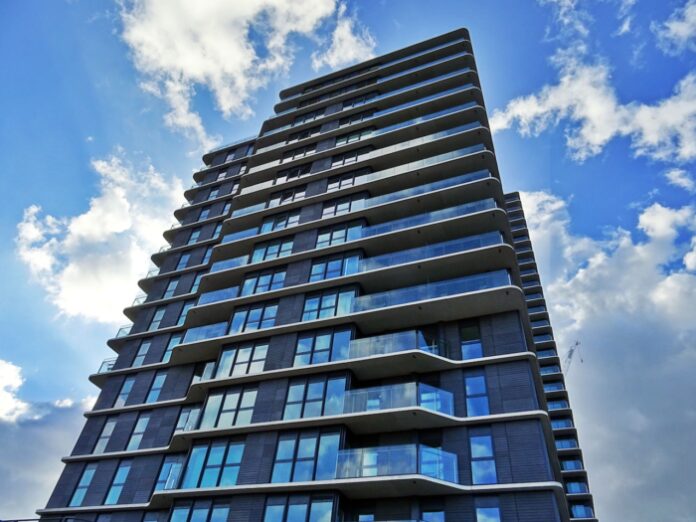A new Building Safety Fund worth £4.5 billion is open to help leaseholders with homes in unsafe high-rise buildings. The government is accepting applications from owners of buildings over 18 metres high with building defects that pose fire safety risks, such as flammable cladding.
Under the recently instated Building Safety Act, leaseholders have even more protections against having to pay the high costs of fixing building safety defects that they weren’t responsible for. The original fund allocated more than £1.3 billion to make at-risk homes safer since 2020.
If you think that you qualify for this financial assistance, read on to find out more about what the Building Safety Fund does and how you can apply in 2022.
What Is the Building Safety Fund 2022?
The purpose of the Building Safety Fund is to address fire safety risks relating to cladding on high-rise buildings where the responsible owner is unwilling to foot the bill for cladding removal and replacement. It aims to facilitate efficient work and cost recovery for cladding issues, supporting communication between affected parties and ensuring residential safety as quickly as possible.
Previously, the Building Safety Fund was open between June and July in 2020 for eligible buildings at least 17.7 metres high. Those who didn’t originally meet the criteria or missed the window for the Building Safety Fund 2020 now have the chance to apply for the Building Safety Fund 2022.
This fund makes sure that landlords and building owners are fully responsible for making their buildings safe for the people living in them, and that they can’t make leaseholders foot the bill for repairs and corrective work. Landlords and owners can now face criminal charges for doing this.
The 2022 version of the process involves a professional assessment — a Fire Risk Appraisal of External Walls (FRAEW) under the new PAS 9980:2022 code of practice — to identify fire safety risks and recommend mitigations. Applicants from 2020 can also choose to switch to the 2022 process if the works on their site still haven’t started, or if they are still waiting for funding.
What Will the Building Safety Fund Pay For?
Under new legislation relating to the Building Safety Act, leaseholders can no longer be made to pay to remove unsafe cladding by building owners or landlords. Where responsible parties refuse or lack the funds to pay, the Building Safety Fund could supply funding and help with recovering costs.
Parties affected by unsafe cladding removal costs may be eligible for the Building Safety Fund 2022 if their property is more than 17.7 metres tall, and has either been their main home as of 14th February 2022, or is one of no more than three residential properties that they own in the UK.
Where an FRAEW assessment has recommended certain actions to address cladding-related fire safety risks on a high-rise building, the government will provide ‘reasonable’ capital for:
- Removal and disposal of existing cladding that poses a fire risk
- Replacement cladding materials (and labour and contractor costs)
- Access costs for eligible works (e.g. scaffolding, mast climbers)
- Further FRAEW recommended mitigations (e.g. sprinklers, smoke alarms)
- Reimbursing FRAEW and eligible legal costs for cost recovery action
The assessment of ‘reasonable’ costs will be informed by industry standards for specification and procurement of these works, with benchmarks from similar projects. If costs are higher than expected, they will look into the application further and may reduce the grant.
However, the Building Safety Fund will not issue grants for:
- General maintenance, renewal, or wider redecoration
- Replacing windows or similar elements
- Operational/running costs of anything installed using the Fund
- Professional team or managing agents’ fees for non-qualifying works
- Legal claim costs against third parties (e.g. contractors)
The Building Safety Fund will cover all eligible costs where the responsible parties are unable to, but the application requires proof that reasonable steps have been taken to recover the costs of cladding work (e.g. through insurance or building warranty claims).
Who Can Apply for the Building Safety Fund?
As part of the Building Safety Programme, this funding aims to make high-rise buildings safe for residents by covering the costs of life-safety fire risk mitigations when the owner or developer is financially unable to pay for cladding removal and replacements themselves.
The Building Safety Fund is open to new applications from 28th July 2022 with no current closing date. For a responsible party to apply, their building must have:
- A height of 18 metres or above (with 30 centimetres tolerance)
- At least one residential leaseholder/exclusively residential accommodation unit
- A FRAEW construction following PAS 9980:2022 cladding methodology
The only exceptions are for social-sector landlords without leaseholders who have concerns about financial viability, and applicants who already committed to or began cladding work between 11th March 2020 and 28th July 2022.
The funding will not be available to otherwise eligible buildings with cladding where remediation work had already been committed to or started prior to the original announcement on 11th March 2020. It’s also unavailable to non-residential buildings with no residential leaseholders, such as offices, hotels, and hospitals.
The ‘Responsible Entity’ for the eligible building (or an approved agent) must complete and submit the Building Safety Fund application form, providing copies of all the required supporting documentation. This can’t be a leaseholder themselves, unless the ‘head’ leaseholder is acting as the ‘Responsible Entity’.
Once submitted, a Legal Advisor will review the application and decide whether you meet the eligibility criteria and can enter a grant funding agreement (GFA) with the Department for Levelling Up, Housing & Communities (DLUHC).
After this ‘triage check’ there will be ‘technical checks’ by Homes England or the Greater London Authority to confirm the building’s condition and the accuracy of your remedial work specifications. You should be informed in writing as each stage progresses.
Check Your Eligibility with the Leaseholder Protections Checker
The DLUHC is encouraging leaseholders to use their online Leaseholder Protections Checker tool to help them understand whether they qualify for financial support under the Building Safety Act. If you’re an eligible leaseholder and can now legally prove that you’re protected from historical safety costs for building defects, you’re advised to speak with your landlord or building owner.
For buildings taller than 11 metres, but shorter than the 17.7-metre minimum for the current Building Safety Fund criteria, the government plans to launch another scheme. This separate fund has yet to be formally announced, but details will be released in due course.
For those worried about selling or buying leasehold properties in need of fire safety work, major mortgage lenders have confirmed that they will still provide finance for buildings with a lease certificate proving the leaseholder isn’t responsible for remediation costs. A joint statement from UK Finance, the Building Societies Association, and the Royal Institution of Chartered Surveyors (RICS) promises a transparent approach to handling properties with building safety defects.
If you aren’t a leaseholder, but plan to purchase a property in a high-rise building outright, it’s understandable to have concerns about its structural safety. It’s best to make sure that the builder or developer has a building warranty in place for peace of mind that all Building Regulations have been followed properly, and to provide a cost recovery option for latent structural defects.
You can find out more about leaseholder protections and the Building Safety Fund 2022 on the government website, or email BSFEnquiries2022@levellingup.gov.uk with any questions about this scheme if you’re responsible for the fire safety of a high-rise building.
Find a Home-Based Business to Start-Up >>> Hundreds of Business Listings.
















































